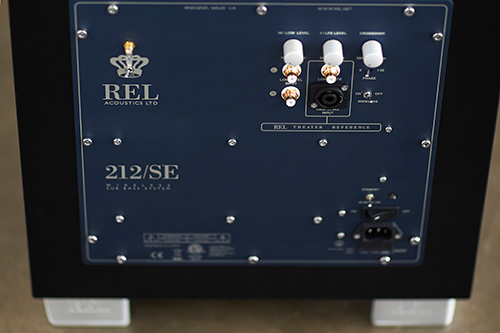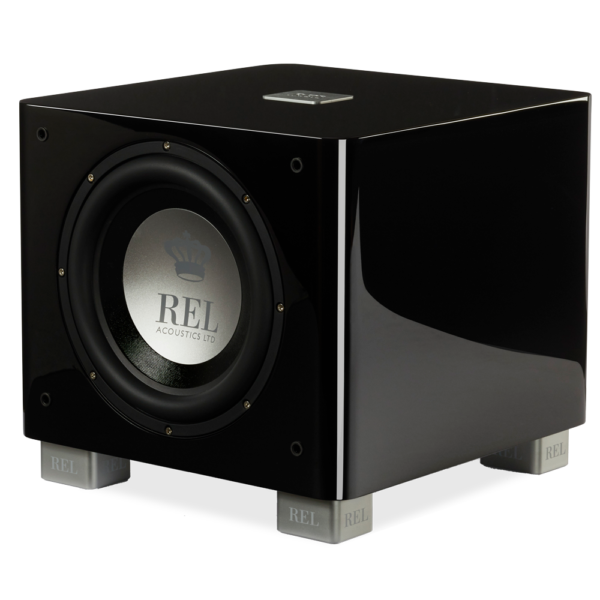Blog
The Art (Not Science) of Tuning
How to Fine-Tune a REL
 If you want to obtain great results in audio, the left brain (logic side) won’t get you there; it takes the right brain (intuitive, creative side) to get great sound. We get a lot of calls and emails asking for help dialing in their new RELs, most folks just don’t want to take the time to read the owner’s manual and figure they’ll shortcut the learning process and go to the source. Fair enough, I might do the same. But there are some who insist on being so literal that they drive themselves crazy—crazy enough that they’re hard to help.
If you want to obtain great results in audio, the left brain (logic side) won’t get you there; it takes the right brain (intuitive, creative side) to get great sound. We get a lot of calls and emails asking for help dialing in their new RELs, most folks just don’t want to take the time to read the owner’s manual and figure they’ll shortcut the learning process and go to the source. Fair enough, I might do the same. But there are some who insist on being so literal that they drive themselves crazy—crazy enough that they’re hard to help.
What a left-brainer does wrong is look up the published speaker specs, then calls REL and asks us for the exact Hertz each click on the crossover corresponds to in a hope that the result will be a speaker subwoofer pair that is perfectly matched based on the crossover settings. The problem is that they started with believing specs from speaker manufacturers and are ignoring the power of room acoustics. Huge mistake.
Usually, the specs listed for a speaker are not the specs that the speaker will deliver in your home. It’s not because any speaker manufacturer in business in the 21st century is trying to dupe a customer (most of those cretins fortunately went out of business in the last big bust, good riddance). The reason is that many speaker manufacturers use expensive anechoic chambers to derive the most factually accurate and precise measurements and then they print those numbers. And a few customers believe them, however, it is extremely unlikely that those speakers will perform at those specs in any other room. For example, I’ll look up a very popular new model from a highly-respected British manufacturer, this model claims a -6dB@28Hz low frequency response. Measured in a wheat field in East Anglia on a 10-foot-high pole purchased for the purpose, that figure might well be true, but in your typical suburban living room, you’d be happy to pull a legitimately usable 40 Hz from them. In sound rooms where we have setup those very speakers, they struggle to reproduce a clean 45 Hz. Room acoustics truly are that powerful. Now that you understand that the specs differ from reality, it is easier to understand why a REL is necessary to obtain true full range sound, but which REL? The right model from REL for this speaker is a T/9i for mixed use or an HT/1205 for primary theater duty
To experience the impact of room acoustics you can perform the following experiment. Listen within a foot or two of the side and rear walls and you will hear the deep bass that your speaker and REL are truly capable of producing. In many cases, you will be buffeted by a veritable storm of huge, oceanic waves of deep, churning bass, tossing you around the room. Then return to your listening chair in the middle of the room and you’ll hear some of that bass drop away. So, did your speaker maker lie? Nope, this is room acoustics at work. And how this plays into us trying to help you set your system up is you—the customer—needs to stop being so left-brained, start trusting your ears and begin to develop the instinctual awareness of what your system actually does and how you can adjust things to get the best possible results.
When you are dialing in your REL, stop focusing on what the clicks mean in terms of Hz steps, and instead focus on how it sounds in your room using your ears. Start with the crossover set a little low , perhaps bring it up a click or two, hear the sub and speaker marry up perfectly and then stop and enjoy. Learn to trust your ears. In the example using the speakers referenced above, you wouldn’t be crossing over at 28 Hz in any event because a REL needs to cross lower than the main speaker in order to blend perfectly.
The real benefit from the physical feedback—the clicks–we use in our controls is that it allows the you AFTER obtaining great results to carefully count backward until the bottom stop is reached. Then, write down the values used so that if the controls are ever accidentally changed, the you know precisely how to restore their settings.
Audio is a field that requires development of an intuitive feel; a “hmm that seems too loud/soft/bright/thin” and then appropriate adjustments being made to counteract the particular shortfall or excess. It’s a journey, not one to be short-changed by looking up a spec on Google, plugging it in and presto the problem is solved. If it were easy, everyone would do it.
Enjoy the journey.










